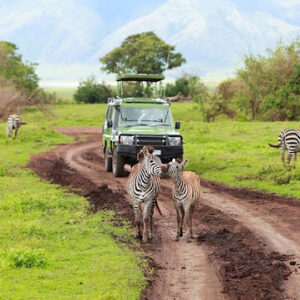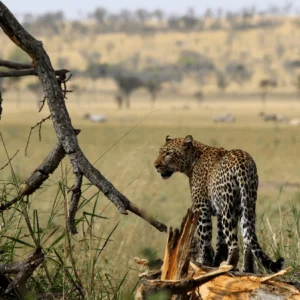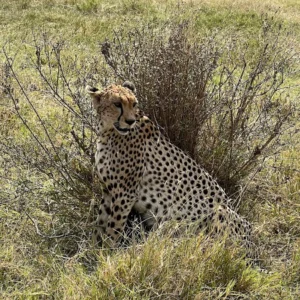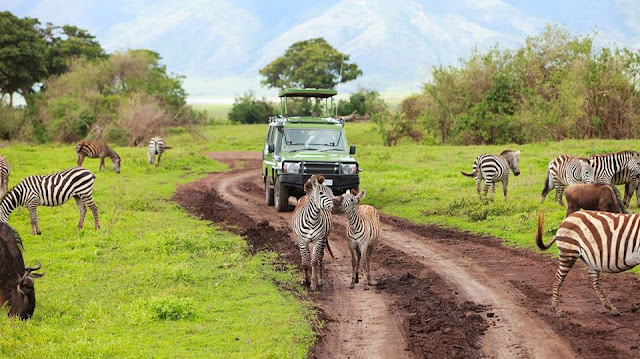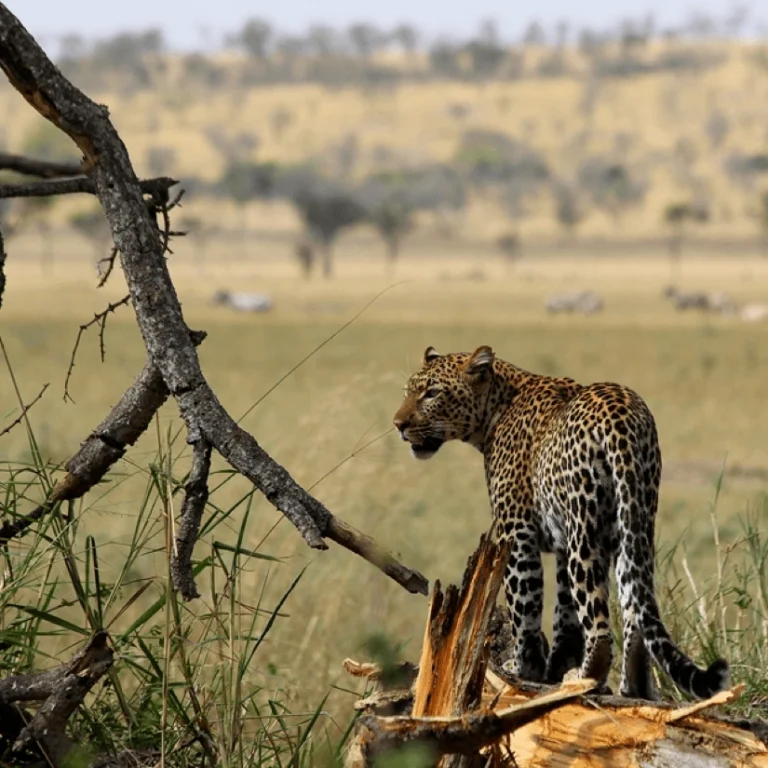In Kilimanjaro’s Alpine Desert Zone (4,000-5,000m), expect a harsh, arid landscape with wide temperature swings from below freezing to scorching, intense solar radiation, strong winds, and sparse plant and animal life, though larger mammals like lions, elephants, and elands may be spotted. The terrain is a mixture of loose sand and rock with little shade. Hikers should prepare for severe weather conditions, wear layers of specialized clothing, use hiking boots for support, and protect themselves from the sun and wind with hats, sunglasses, and neck gaiters.
The Alpine Desert Zone of Kilimanjaro is a remarkable ecosystem that graces the slopes of Africa’s tallest peak, Mount Kilimanjaro. This unique zone, characterized by its high elevation and sparse vegetation, presents an intriguing landscape for adventurers and nature enthusiasts alike. In this comprehensive guide, we delve into the characteristics, environmental significance, notable flora, tackling tips, conservation challenges, and global comparisons of Kilimanjaro’s Alpine Desert.
Characteristics of Alpine Deserts
The Alpine Desert Zone of Kilimanjaro is situated above the forest belt, typically starting around 4,000 meters above sea level. This zone is renowned for its harsh conditions, including low temperatures, high winds, and limited precipitation. The combination of these factors creates an arid environment, where moisture is scarce and vegetation struggles to thrive.
Despite the challenging conditions, the Alpine Desert hosts a variety of resilient plant species adapted to survive in this harsh landscape. Among the notable flora found in this zone are Helichrysum Newii, Lobelia Deckenii, Senecio Kilimanjari, and Alpine Tussock Grass. These plants have evolved unique mechanisms to conserve water and withstand extreme temperatures, contributing to the zone’s ecological diversity.
The Environmental Role of Alpine Deserts
Alpine deserts play a crucial role in the ecosystem of Mount Kilimanjaro and beyond. Despite their seemingly barren appearance, these environments provide habitat for specialized flora and fauna uniquely adapted to survive in such extreme conditions. Additionally, alpine deserts serve as important watersheds, capturing and regulating water flow downstream.
Furthermore, the reflective properties of the rocky terrain in alpine deserts help to regulate local climate by reducing surface temperatures. This cooling effect can mitigate the impacts of rising temperatures in the surrounding areas, making alpine deserts invaluable in the face of climate change.
Kilimanjaro’s Alpine Desert – Notable Flora
The Alpine Desert Zone of Kilimanjaro may appear desolate at first glance, but it is home to a diverse array of plant life. Among the notable flora species found in this unique ecosystem are:
Helichrysum Newii: Also known as the Kilimanjaro Everlasting, this resilient plant boasts striking yellow flowers and thrives in rocky, high-altitude environments.
Lobelia Deckenii: A distinctive species of lobelia with elongated, spiky leaves and tall flower spikes, often found clinging to rocky outcrops.
Senecio Kilimanjari: This peculiar plant, resembling a miniature palm tree, is endemic to Mount Kilimanjaro and plays a vital role in the alpine ecosystem.
Alpine Tussock Grass: A hardy grass species that forms dense clumps, providing essential ground cover and soil stabilization in the Alpine Desert Zone.
Tips for Tackling Kilimanjaro’s Alpine Desert
Exploring the Alpine Desert Zone of Kilimanjaro presents a unique set of challenges and requires careful preparation. Here are some essential tips for adventurers venturing into this rugged terrain:
Acclimatization: Take time to acclimatize to the high altitude to minimize the risk of altitude sickness.
Hydration: Stay hydrated by drinking plenty of water, as the dry air and physical exertion can lead to dehydration.
Layering: Dress in layers to adjust to changing temperatures throughout the day, including warm clothing for cold nights.
Sun Protection: Wear sunscreen, sunglasses, and a wide-brimmed hat to protect against the intense UV radiation at high altitudes.
Respect Wildlife: Observe wildlife from a distance and avoid disturbing their natural behavior.
By following these tips and exercising caution, adventurers can safely explore the Alpine Desert Zone of Kilimanjaro while minimizing their impact on the fragile ecosystem.
Conservation Challenges
While the Alpine Desert Zone of Kilimanjaro is a remarkable natural wonder, it faces numerous conservation challenges. Human activities, including deforestation, agriculture, and tourism, pose threats to the fragile ecosystem. Climate change exacerbates these challenges, leading to shifts in precipitation patterns and temperature extremes.
To address these conservation challenges, collaborative efforts are essential. Conservation organizations, government agencies, local communities, and tourists must work together to implement sustainable practices and protect the biodiversity of Mount Kilimanjaro’s Alpine Desert.
Famous Alpine Deserts Around the World
Mount Kilimanjaro’s Alpine Desert is just one example of these unique ecosystems found across the globe. Other famous alpine deserts include:
While Kilimanjaro’s Alpine Desert Zone is undoubtedly awe-inspiring. It is just one of many remarkable Alpine Deserts found around the world. From the Tibetan Plateau to the Altiplano of South America and the High Sierra of North America. These high-altitude environments offer a glimpse into the extraordinary resilience of life in extreme conditions.
Tibetan Plateau
The Tibetan Plateau, often referred to as the “Roof of the World.” Is the world’s largest and highest plateau, with an average elevation exceeding 4,500 meters (14,800 feet). This vast expanse of barren, windswept terrain is home to a unique array of flora and fauna adapted to the harsh conditions of the Tibetan Plateau.
Altiplano
The Altiplano, located in the Andes Mountains of South America. Is a high plateau region renowned for its stark beauty and extreme elevation. Despite its arid climate and thin air, the Altiplano supports a rich diversity of life, including unique plant species. Andean wildlife, and indigenous cultures.
High Sierra
The High Sierra, a rugged mountain range in California, USA, is renowned for its towering peaks. Deep valleys, and pristine alpine lakes. This dramatic landscape is home to a variety of Alpine Deserts. Including the iconic White Mountains and the starkly beautiful Great Basin Desert.
FAQs: The Alpine Desert Zone of Kilimanjaro
Intense rays of the sun beat down during the day and at night it’s below freezing. There is very little water in this area, and only the hardiest plants can exist. It’s barren and inhospitable. You’ll come across small hardy plants, very few flowers and the odd tussoky-grass.
What is the elevation of Kilimanjaro’s Alpine Desert Zone?
The Alpine Desert Zone of Kilimanjaro typically begins above 4,500 meters (14,700 feet) in elevation.
What plant species can be found in Kilimanjaro’s Alpine Desert?
Some notable plant species found in Kilimanjaro’s Alpine Desert Zone include Helichrysum Newii. Lobelia Deckenii, Senecio Kilimanjari, and Alpine Tussock Grass.
What is the alpine desert zone?
The alpine desert is comprised of volcanic rocks of all shapes and sizes. This zone receives little water and correspondingly light vegetation exists here. The temperature can be quite hot during the day. The thin air and proximity to the equator result in very high levels of solar radiation.
What are the conservation challenges facing Alpine Deserts?
- Conservation challenges facing Alpine Deserts include habitat degradation, climate change, and unsustainable tourism practices.
- Discover the Alpine Desert Zone of Kilimanjaro: a harsh but intriguing ecosystem characterized by high elevation and sparse vegetation.
- Uncover the secrets of Kilimanjaro’s Alpine Desert Zone: its harsh conditions, limited vegetation, and fascinating environmental significance.
- Experience the harsh yet captivating Alpine Desert Zone of Kilimanjaro: a high-elevation ecosystem with extreme temperatures and limited precipitation.
- Learn about the Alpine Desert Zone of Kilimanjaro. Its arid environment, and the challenges faced by its unique flora in this comprehensive guide.
Conclusion: The Alpine Desert Zone of Kilimanjaro
In conclusion, the Alpine Desert Zone of Kilimanjaro is a captivating ecosystem that offers a glimpse into the resilience of life in extreme environments. From its unique flora and fauna to its vital role in climate regulation. This high-altitude environment is a testament to the remarkable adaptability of nature. By understanding and appreciating the significance of Alpine Deserts. We can work together to ensure their preservation for generations to come.

